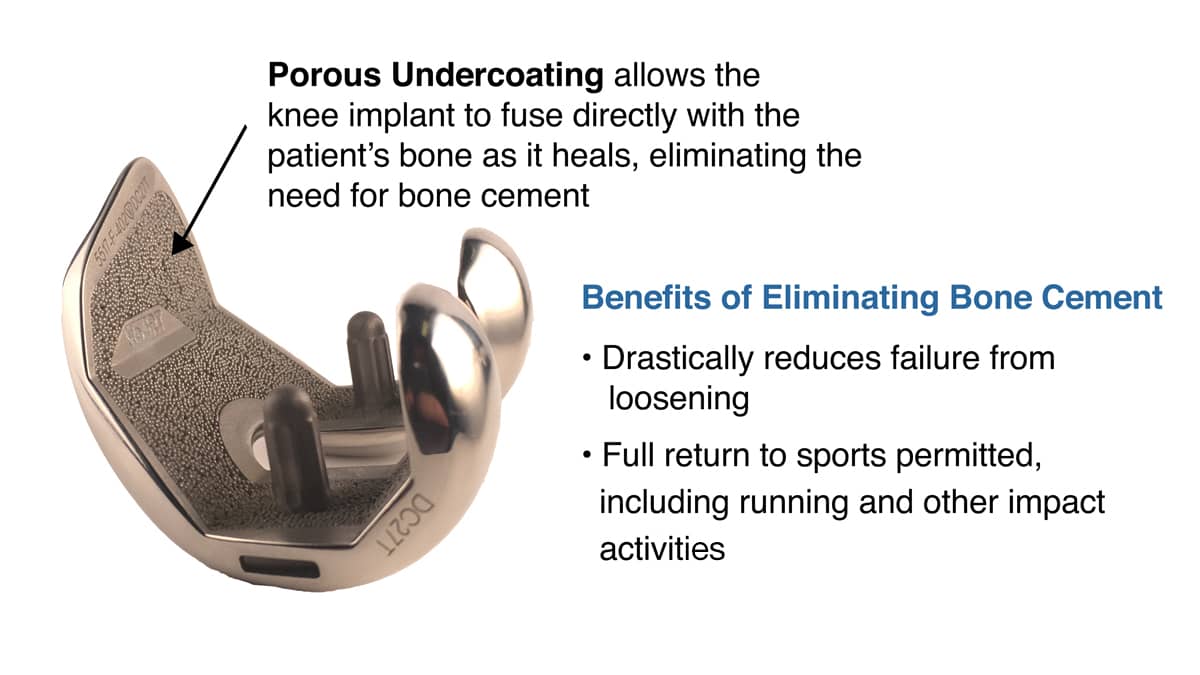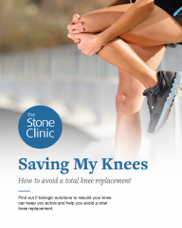Running after Artificial Joint Replacement
To run, or not to run? That is the question I am often asked by people in need of an artificial joint replacement. The answer is:

Robotic partial knee replacement patient and active triathlete Scott Endsley. Find out his full story here
Run if you can. And play tennis and ski and climb and even play Pickleball—although that addictive sport sends more patients to our clinic than any other these days. The answer to the running question follows this thought pattern:
Most people who love to run but have developed knee joint arthritis have either given up serious running or run with awful gaits—including limited motion, abnormal strides, and stiff postures. Still, they want to return to running and believe artificial joint replacement will allow them to do this. The problem is that doctors have for years told such patients that they should not run or play singles tennis.
The reasoning behind this was impact activities, like running or singles tennis, would loosen the cement used to fix the prosthesis into the bone, causing the joints to fail early. And since the first artificial joint is the best one, further revisions—due primarily to the loss of bone that occurs during the removal process—do not have as high a success rate. The hope has long been that once you had undergone a joint replacement, it would be your last knee surgery.
But impact and resistance exercises are the best, and possibly the only way, to truly build bone, which we lose as we age. Bone loss (osteoporosis) is an important cause of joint replacement failure in the elderly. And these exercises build muscle as well as bone—and the stronger the muscle, the less force is transferred through the joint surfaces. Strengthening these muscles also improves the gait, especially while playing sports. Also, resistance and impact exercises dramatically improve one’s mental outlook by increasing testosterone, pheromones, adrenaline, and other happy-brain-making chemicals. And happy patients have better outcomes.
Most importantly, recent studies confirmed a fact that seemed to have been forgotten: There is no evidence that sports participation has ever led to artificial joint loosening. That long-held fear was simply never borne out by the data.
On top of that, 80% of patients told they need a total joint replacement could get away with a partial joint replacement, or a biologic joint replacement— both of which make the knee feel and function more normally than a total knee joint replacement. And achieving normal mechanics in your sport is a big part of avoiding reinjury.
A possibly equally important fact is that modern knee joint resurfacing has advanced since the days of large bone resections and cement. Today, we use computer guidance and robotic assistance to minimize bone resection, making the procedure vastly more precise and eliminating the need for bone cement. Now, the bone has the ability to grow directly into the prosthesis, eliminating concerns about cement loosening. Without cement, increased patient exercise leads to more bone formation and stronger muscles—leading to more successful replacements.

The truth is, the vast majority of people who have given up the sports they love don't have to do so. Moreover, those who have already undergone surgery can initiate gradual training programs to strengthen their bones and muscles. This is best achieved under the guidance of a skilled physical therapist or trainer.
So pull on your sneakers (running shoes, training shoes, tennis shoes, climbing shoes, even your Pickleball high-tops), lace them up, and put a smile on your face and anticipation in your body. “To be or not to be” is all in the sweat.
More on the Key Differences Between Manual and Robotic Knee Replacement
For more on how robotic knee replacement can help endurance athletes play for a lifetime, head over to this page with expert guidance from Dr. Stone and inspirational stories from our triathletes and ultra runners.


